
Dogwood leaves and berries.
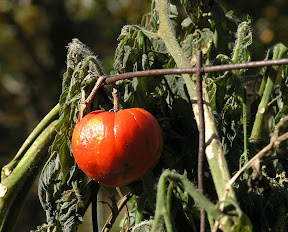
Turn out the lights; the garden's over.

Our road out ... up near the gate.

The dill was the only plant in the garden not damaged by our light freeze.
.




A Little Miscellaneous
Waiting on the Leaves
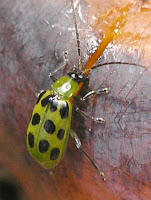
Spotted Cucumber Beetle (Diabrotica undecimpunctata)
Bird's Foot Violet (Viola pedata)
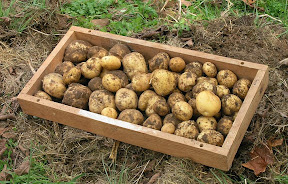 weekend in June. Because of our late start, we didn't bother planting some crops -- like corn. We anticipated problems with other crops. We figured the question was: Would the crops produced before succumbing to the prolonged heat and dryness typical of our late summer?
weekend in June. Because of our late start, we didn't bother planting some crops -- like corn. We anticipated problems with other crops. We figured the question was: Would the crops produced before succumbing to the prolonged heat and dryness typical of our late summer? veggies -- like tomatoes and green beans -- produced well. Others -- like the potatoes we harvested today -- did not do so well. I really do not know why our potatoes produced so poorly. I've heard others also had poor potato yields. Ditto for peppers (bell, jalapeno, etc.) which are usually a "nothing to it" plant to grow.
veggies -- like tomatoes and green beans -- produced well. Others -- like the potatoes we harvested today -- did not do so well. I really do not know why our potatoes produced so poorly. I've heard others also had poor potato yields. Ditto for peppers (bell, jalapeno, etc.) which are usually a "nothing to it" plant to grow.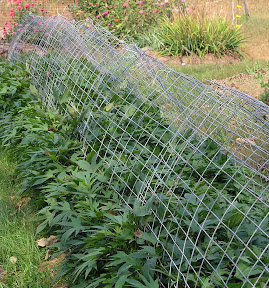

Pathetic Potato Harvest
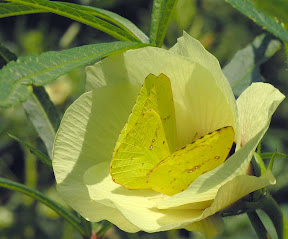 yellow or white; outer edges of both wings with irregular black borders; upper forewing with dark spot in cell. Lower surface of hindwing of both sexes with 2 pink-edged silver spots.
yellow or white; outer edges of both wings with irregular black borders; upper forewing with dark spot in cell. Lower surface of hindwing of both sexes with 2 pink-edged silver spots.
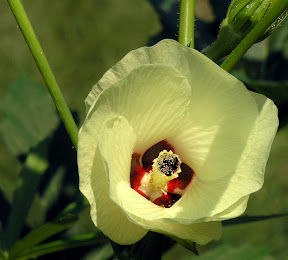
Cloudless Sulphur (Phoebis sennae)
Spider Wasp (Tachypompilus ferrugineus)
